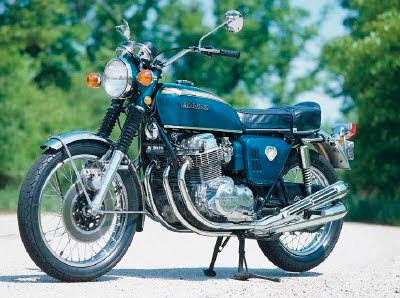
This is a 1979
Honda CB750K with 3,350 original miles.
I’m selling this bike for my friend Mike who is the second owner.
He purchased the bike when it was one year old with 700 miles on it, rode it for one summer parked it in his garage to turn his attention to his new growing family.
It was properly prepped for storage figuring he would let it sit for a year and have more time to ride the following year.
Now it’s October 2010, 29 years later I asked mike how his grand children where and what ever happened to your 750
Honda?
He told me it’s in the garage still under its cover.
So we took the bike out of the garage, washed off the dust, drained the old gas and replaced it with fresh gas.
We had to clean the carbs, replace spark plugs and the battery,
Whenever I travel, I try to find a way to enjoy some two-wheeled activity. Whether I beg, borrow or rent, procuring some saddle time is always a priority. On my latest trip back to the Old Dominion (that’s Virginia for those not not familiar with state nicknames), I scored a ride on a bike older than my own riding career. My sister’s recent interest in learning to ride, lead her frugal husband to the acquisition of some
classic iron.
The ’77 Honda I rode was very similar to the ’69 original that took the world by storm, catapulting the Japanese motorcycle industry in general, and Honda specifically, to the forefront worldwide. A position they’ve yet to relinquish for more than 40 years. Before the CB750, the British ruled the big-bore market with Triumph, BSA and Norton comprising the lion’s share. Honda’s racing success in the ‘60’s showed the world that the Asians would be a force to be reckoned with, but the CB was the sledgehammer blow that dealt the fatal blow to the Limey’s. Motorcycling would never be the same.
While this bike was very cutting edge in it’s day, disc brake, electronic ignition, overhead valves, pointless ignition; on the day I rode it, it seemed pretty “old school”. While I’ve never had a chance to ride anything older than this, it was enough to ruin any nostalgia I might have had for those “good ole days”. Even though it did everything I asked of it just fine, my butt’s been recalibrated over the last 30 years and this machine had no real appeal. While I’m sure throwing a leg over this thing in ’69 was a revelation, today it’s barely adequate.
I will say I was surprised by a few things that I was expecting to be horrible. Brakes have come a long way, but the stoppers on the CB were good. Not stoppie good, but I tried some panic stops and wasn’t feeling like I was going to have trouble shedding speed if it became necessary. It was actually quite easy to nail some clutchless up-shift while accelerating away from lights. And, in general, the transmission was slick and it was a non-issue to select each gear. The motor made good power everywhere and even had some stonk on top. Although my virtually stock SV650 would waste this bike.
Other than hard starting, the only real complaint I had was the suspension. It was sacked and in need of new springs and fluid. Oh, and the stock stepped seat severely limited for-aft movement.
So I got to try a piece of history. And while educational, I’m pretty glad we are where we are today. The old king is basically dead, long live his fuel-injected, synthetic-oiled, radial tired great-grand children.
change the oil and filter and the
bike started right up like it was new.
The tires are all original and in great shape but could be replaced for serious driving.
The horn would not work properly so we replaced it, and other than that it just needs a good detailing.
The original tool kit is complete and intact.
I also have the original owners manual.
The small scratch on the tank has been there for 30 years, the inside of the tank is clean and rust free.
The exhaust does have some cracks and surface rust, but has not broken through.
This bike is in perfect working order.
And I have the original title in hand.
Good luck, this is a rare find and a great piece of Honda history.




